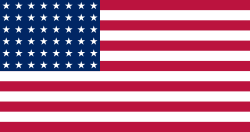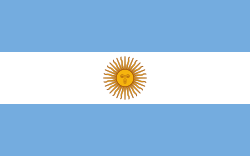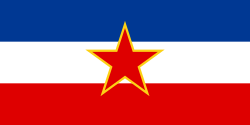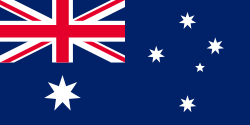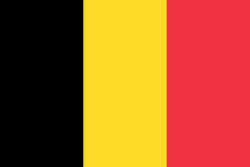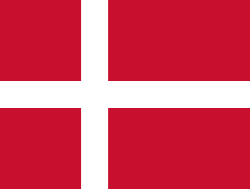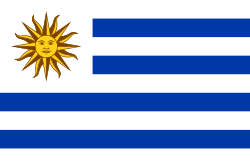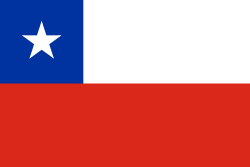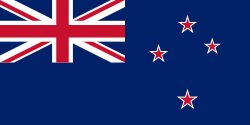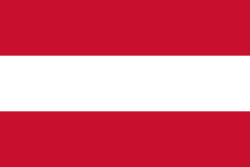Olympische Sommerspiele 1952/Rudern
| Rudern bei den Olympischen Sommerspielen 1952 | |
|---|---|
 | |
 | |
| Information | |
| Austragungsort | |
| Wettkampfstätte | Seurasaarenselkä |
| Nationen | 33 |
| Athleten | 404 (404 |
| Datum | 20. – 23. Juli 1952 |
| Entscheidungen | 7 |
| ← 1948 London | |
Bei den Olympischen Sommerspielen 1952 in der finnischen Hauptstadt Helsinki wurden zwischen dem 20. und dem 23. Juli 1952 sieben Wettbewerbe im Rudern ausgetragen.
Die erfolgreichste Nation waren die Vereinigten Staaten, deren Boote zwei der sieben Wettbewerbe gewannen und sich darüber hinaus eine Bronzemedaille sicherten. Dahinter folgten die Sowjetunion mit einer Goldmedaille und zwei Silbermedaillen sowie Frankreich mit je einer Gold- und Silbermedaille. Jeweils ein Olympiasieg gelang Booten aus Argentinien, Jugoslawien und der Tschechoslowakei.
Bilanz
Medaillenspiegel
| Platz | Land | Gesamt | |||
|---|---|---|---|---|---|
| 1 | 2 | – | 1 | 3 | |
| 2 | 1 | 2 | – | 3 | |
| 3 | 1 | 1 | – | 2 | |
| 4 | 1 | – | – | 1 | |
| 1 | – | – | 1 | ||
| 1 | – | – | 1 | ||
| 7 | – | 1 | 1 | 2 | |
| – | 1 | 1 | 2 | ||
| 9 | – | 1 | – | 1 | |
| – | 1 | – | 1 | ||
| 11 | – | – | 1 | 1 | |
| – | – | 1 | 1 | ||
| – | – | 1 | 1 | ||
| – | – | 1 | 1 | ||
| Gesamt | 7 | 7 | 7 | 21 | |
Medaillengewinner
| Disziplin | Gold | Silber | Bronze |
|---|---|---|---|
| Einer | |||
| Doppelzweier | |||
| Zweier ohne Steuermann | |||
| Zweier mit Steuermann |
|
| |
| Vierer ohne Steuermann |
|
| |
| Vierer mit Steuermann |
|
| |
| Achter |
|
|
Teilnehmer
Insgesamt nahmen 404 Athleten aus 33 Nationen an den Wettbewerben teil.
 Ägypten (8)
Ägypten (8) Argentinien (9)
Argentinien (9) Australien (14)
Australien (14) Belgien (12)
Belgien (12) Brasilien (3)
Brasilien (3) Chile (1)
Chile (1) Dänemark (25)
Dänemark (25) BR Deutschland (21)
BR Deutschland (21) Finnland (20)
Finnland (20) Frankreich (17)
Frankreich (17) Griechenland (3)
Griechenland (3)
 Großbritannien (23)
Großbritannien (23) Italien (26)
Italien (26) Japan (5)
Japan (5) Jugoslawien (13)
Jugoslawien (13) Kanada (15)
Kanada (15) Neuseeland (5)
Neuseeland (5) Niederlande (12)
Niederlande (12) Norwegen (9)
Norwegen (9) Österreich (4)
Österreich (4) Polen (10)
Polen (10) Portugal (9)
Portugal (9)
 Rumänien (9)
Rumänien (9) Saarland (7)
Saarland (7) Schweden (16)
Schweden (16) Schweiz (13)
Schweiz (13) Sowjetunion (26)
Sowjetunion (26) Spanien (6)
Spanien (6) Südafrikanische Union (5)
Südafrikanische Union (5) Tschechoslowakei (8)
Tschechoslowakei (8) Ungarn (15)
Ungarn (15) Uruguay (3)
Uruguay (3) Vereinigte Staaten (26)
Vereinigte Staaten (26)
Ergebnisse
| Platz | Land | Sportler | Zeit (min) |
|---|---|---|---|
| 1 | Juri Tjukalow | 8:12,8 | |
| 2 | Mervyn Wood | 8:14,5 | |
| 3 | Teodor Kocerka | 8:19,4 | |
| 4 | Tony Fox | 8:22,5 | |
| 5 | Ian Stephen | 8:31,4 | |
| 6 | Jack Kelly | 7:42,0 (im 2. Hoffnungslauf) | |
| 7 | Günther Schütt | 7:42,9 (im 2. Hoffnungslauf) | |
| 8 | Paul Meyer | 7:48,3 (im 2. Hoffnungslauf) |
| Platz | Land | Sportler | Zeit (min) |
|---|---|---|---|
| 1 | Tranquilo Cappozzo Eduardo Guerrero | 7:32,2 | |
| 2 | Georgi Schilin Igor Jemtschuk | 7:38,3 | |
| 3 | Miguel Seijas Juan Rodríguez | 7:43,7 | |
| 4 | Jacques Maillet Achille Giovannoni | 7:06,3 | |
| 5 | Antonín Malinkovič Jiří Vykoukal | 7:23,5 | |
| 6 | Pat Costello Walter Hoover | 7:03,6 (im 2. Hoffnungslauf) | |
| 7 | Waldemar Beck Gerhard Füssmann | 7:08,2 (im 2. Hoffnungslauf) | |
| 8 | John Rogers Murray Riley | 7:13,1 (im 2. Hoffnungslauf) |
Weitere Teilnehmer aus dem deutschsprachigen Raum:
| Platz | Land | Sportler | Zeit (min) |
|---|---|---|---|
| 1 | Charlie Logg Thomas Price | 8:20,7 | |
| 2 | Michel Knuysen Bob Baetens | 8:23,5 | |
| 3 | Kurt Schmid Hans Kalt | 8:32,7 | |
| 4 | David Callender Chris Davidge | 8:37,4 | |
| 5 | Jean-Pierre Souche René Guissart | 8:48,8 | |
| 6 | Alberto Madero Óscar Almirón | 7:41,0 (im 2. Hoffnungslauf) | |
| 7 | Ben Binnendijk Carl Kuntze | 7:44,7 (im 2. Hoffnungslauf) | |
| 8 | Bent Jensen Palle Tillisch | 7:47,1 (im 2. Hoffnungslauf) |
Weitere Teilnehmer aus dem deutschsprachigen Raum:
 Klaus Hahn & Herbert Kesel (im 1. Hoffnungslauf)
Klaus Hahn & Herbert Kesel (im 1. Hoffnungslauf)
| Platz | Land | Sportler | Zeit (min) |
|---|---|---|---|
| 1 | Raymond Salles Gaston Mercier Bernard Malivoire (Stm.) | 8:28,6 | |
| 2 | Heinz-Joachim Manchen Helmut Heinhold Helmut Noll (Stm.) | 8:32,1 | |
| 3 | Svend Pedersen Poul Svendsen Jørgen Frantzen (Stm.) | 8:34,9 | |
| 4 | Giuseppe Ramani Aldo Tarlao Luciano Marion (Stm.) | 8:38,4 | |
| 5 | Veijo Mikkolainen Toimi Pitkänen Erkki Lyijynen (Stm.) | 8:40,8 | |
| 6 | James Fifer Duvall Hecht James Beggs (Stm.) | 7:55,5 (im 2. Hoffnungslauf) | |
| 7 | Czesław Lorenc Romuald Thomas Zdzisław Michalski (Stm.) | 8:00,9 (im 2. Hoffnungslauf) | |
| 8 | Hippolyte Mattelé Eugeen Jacobs Kamiel Van Dooren (Stm.) | 8:03,7 (im 2. Hoffnungslauf) |
Weitere Teilnehmer aus dem deutschsprachigen Raum:
 Walter Lüchinger, Alexander Siebenhaar & Walter Ludin (im 1. Hoffnungslauf)
Walter Lüchinger, Alexander Siebenhaar & Walter Ludin (im 1. Hoffnungslauf)

| Platz | Land | Sportler | Zeit (min) |
|---|---|---|---|
| 1 | Duje Bonačić Velimir Valenta Mate Trojanović Petar Šegvić | 7:16,0 | |
| 2 | Pierre Blondiaux Jean-Jacques Guissart Marc Bouissou Roger Gautier | 7:18,9 | |
| 3 | Veikko Lommi Kauko Wahlsten Oiva Lommi Lauri Nevalainen | 7:23,3 | |
| 4 | Harry Almond John Jones James Crowden Adrian Cadbury | 7:25,2 | |
| 5 | Edward Schwarzer Zbigniew Schwarzer Henryk Jagodziński Zbigniew Żarnowiecki | 7:28,2 | |
| 6 | Roman Sacharow Juri Rogosow Iwan Makarow Wladimir Kirsanow | 6:38,5 (im 2. Hoffnungslauf) | |
| 7 | Werner Biel Hans Krause-Wichmann Joachim Krause-Wichmann Hanns Peters | 6:47,2 (im 2. Hoffnungslauf) | |
| 8 | Sverre Kråkenes Kristoffer Lepsøe Thorstein Kråkenes Harald Kråkenes | 6:48,4 (im 2. Hoffnungslauf) |
Weitere Teilnehmer aus dem deutschsprachigen Raum:
| Platz | Land | Sportler | Zeit (min) |
|---|---|---|---|
| 1 | Karel Mejta senior Jiří Havlis Jan Jindra Stanislav Lusk Miroslav Koranda (Stm.) | 7:33,4 | |
| 2 | Enrico Bianchi Karl Weidmann Heinrich Scheller Émile Ess Walter Leiser (Stm.) | 7:36,5 | |
| 3 | Carl Lovsted Alvin Ulbrickson Richard Wahlstrom Matt Leanderson Al Rossi (Stm.) | 7:37,0 | |
| 4 | John MacMillan Graham Fisk Laurence Guest Peter de Giles Paul Massey (Stm.) | 7:41,2 | |
| 5 | Kurt Grönholm Paul Stråhlman Birger Karlsson Karl-Erik Johansson Antero Tukiainen (Stm.) | 7:43,8 | |
| 6 | Boris Fjodorow Georgi Guschtschenko Jewgeni Tretnikow Kirill Putyrski Boris Bretschko (Stm.) | 7:05,1 (im 2. Hoffnungslauf) | |
| 7 | Albino Trevisan Amadeo Scarpi Abbondio Smerghetto Tarquinio Angiolin Domenico Cambieri (Stm.) | 7:06,0 (im 2. Hoffnungslauf) | |
| 8 | Bjørn Christoffersen Arnfinn Larsen Wilhelm Hayden Thor Nilsen Leif Andersen (Stm.) | 7:06,6 (im 2. Hoffnungslauf) |
Weitere Teilnehmer aus dem deutschsprachigen Raum:
 Günter Twiesselmann, Klaus Schulze, Heinz Beyer, Gerhard Vogeley & Hans-Joachim Wiemken (Stm.) (im 1. Hoffnungslauf)
Günter Twiesselmann, Klaus Schulze, Heinz Beyer, Gerhard Vogeley & Hans-Joachim Wiemken (Stm.) (im 1. Hoffnungslauf)
| Platz | Land | Sportler | Zeit (min) |
|---|---|---|---|
| 1 | Frank Shakespeare, William Fields, James Dunbar, Richard Murphy, Robert Detweiler, Henry Proctor, Wayne Frye, Edward Stevens, Charles Manring (Stm.) | 6:25,9 | |
| 2 | Jewgeni Brago, Wladimir Rodimuschkin, Alexei Komarow, Igor Borissow, Slawa Amiragow, Leonid Gissen, Jewgeni Samsonow, Wladimir Krjukow, Igor Poljakow (Stm.) | 6:31,2 | |
| 3 | Bob Tinning, Ernest Chapman, Nimrod Greenwood, David Anderson, Geoff Williamson, Mervyn Finlay, Edward Pain, Phil Cayzer, Tom Chessell (Stm.) | 6:33,1 | |
| 4 | David Macklin, Alastair MacLeod, Nicholas Clack, Roger Sharpley, Edward Worlidge, Charles Lloyd, William Windham, David Jennens, John Hinde (Stm.) | 6:34,8 | |
| 5 | Anton Reinartz, Michael Reinartz, Roland Freihoff, Heinz Zünkler, Peter Betz, Stefan Reinartz, Hans Betz, Anton Siebenhaar, Hermann Zander (Stm.) | 6:42,8 | |
| 6 | Ladislav Matetić, Branko Belačić, Vladimir Horvat, Vojko Šeravić, Karlo Pavlenč, Boris Beljak, Stanko Despot, Drago Husjak, Zdenko Bego (Stm.) | 6:12,0 (im 2. Hoffnungslauf) | |
| 7 | István Sándor, Csaba Kovács, Miklós Zágon, Tibor Nádas, Rezső Riheczky, Pál Bakos, László Marton, Béla Zsitnik, Robert Zimonyi (Stm.) | 6:15,4 (im 2. Hoffnungslauf) | |
| 8 | Bjørn Stybert, Preben Hoch, Mogens Snogdahl, Jørn Snogdahl, Helge Muxoll Schrøder, Björn Brönnum, Leif Hermansen, Ole Scavenius Jensen, John Vilhelmsen (Stm.) | 6:16,0 (im 2. Hoffnungslauf) |
Weblinks
- Rudern bei den Olympischen Spielen 1952 in der Olympedia (englisch)
Auf dieser Seite verwendete Medien
Pictograms of Olympic sports - Rowing. This is unofficial sample picture. Images of official Olympic pictograms for 1948 Summer Olympics and all Summer Olympics since 1964 can be found in corresponding Official Reports.
Autor/Urheber: maix¿?, Lizenz: CC BY-SA 2.5
A silver medal with the olympic rings inside
US Flag with 48 stars. In use for 47 years from July 4, 1912, to July 3, 1959.
this is the flag of the Soviet Union in 1936. It was later replaced by File:Flag of the Soviet Union (1955-1980).svg.
this is the flag of the Soviet Union in 1936. It was later replaced by File:Flag of the Soviet Union (1955-1980).svg.
Flag of the Socialist Federal Republic of Yugoslavia (1946-1992).
The design (blazon) is defined in Article 4 of the Constitution for the Republic of Yugoslavia (1946). [1]
Flag of Australia, when congruence with this colour chart is required (i.e. when a "less bright" version is needed).
See Flag of Australia.svg for main file information.Die quadratische Nationalfahne der Schweiz, in transparentem rechteckigem (2:3) Feld.
Flag of Second Polish Republic and later People's Republic of Poland in period from March 29, 1928 to March 10, 1980. Red shade used here is HTML "vermilion" #E34234. Proportion 5:8.
Flag of Second Polish Republic and later People's Republic of Poland in period from March 29, 1928 to March 10, 1980. Red shade used here is HTML "vermilion" #E34234. Proportion 5:8.
The flag of Brazil from 1889 to 1960 with 21 stars.
Das Bild dieser Flagge lässt sich leicht mit einem Rahmen versehen
Flagge von Königreich Griechenland (1863-1924; 1935-1973).
Flagge von Königreich Griechenland (1863-1924; 1935-1973).
Flagge des Vereinigten Königreichs in der Proportion 3:5, ausschließlich an Land verwendet. Auf See beträgt das richtige Verhältnis 1:2.
Flagge des Vereinigten Königreichs in der Proportion 3:5, ausschließlich an Land verwendet. Auf See beträgt das richtige Verhältnis 1:2.
Flag of Italy from 1946 to 2003, when exact colors were specified.
Variant version of a flag of Japan, used between January 27, 1870 and August 13, 1999 (aspect ratio 7:10).
Variant version of a flag of Japan, used between January 27, 1870 and August 13, 1999 (aspect ratio 7:10).
The Canadian Red Ensign used between 1921 and 1957.
This image has compared for accuracy (mainly colors) using an image from World Statesmen. The only change is making the maple leaves green from red. This image has compared for accuracy (mainly colors) using an image from World Statesmen. The most recent version of this image has changed the harp into one with a female figure; see [http://flagspot.net/flags/ca-1921.html FOTW
The Canadian Red Ensign used between 1921 and 1957.
This image has compared for accuracy (mainly colors) using an image from World Statesmen. The only change is making the maple leaves green from red. This image has compared for accuracy (mainly colors) using an image from World Statesmen. The most recent version of this image has changed the harp into one with a female figure; see [http://flagspot.net/flags/ca-1921.html FOTW
Flagge Österreichs mit dem Rot in den österreichischen Staatsfarben, das offiziell beim österreichischen Bundesheer in der Charakteristik „Pantone 032 C“ angeordnet war (seit Mai 2018 angeordnet in der Charakteristik „Pantone 186 C“).
Flagge Portugals, entworfen von Columbano Bordalo Pinheiro (1857-1929), offiziell von der portugiesischen Regierung am 30. Juni 1911 als Staatsflagge angenommen (in Verwendung bereits seit ungefähr November 1910).
Autor/Urheber: SanchoPanzaXXI, Lizenz: CC BY-SA 4.0
Flag of Spain during the Spanish State. It was adopted on 11 October 1945 with Reglamento de Banderas Insignias y Distintivos (Flags, Ensigns and Coats of Arms Bill)
Autor/Urheber: SanchoPanzaXXI, Lizenz: CC BY-SA 4.0
Flag of Spain during the Spanish State. It was adopted on 11 October 1945 with Reglamento de Banderas Insignias y Distintivos (Flags, Ensigns and Coats of Arms Bill)
Flag of South Africa, used between 1928 and 1982. It is identical to the 1982 to 1994 version except that the shade of blue is darker. It is also known as the "Oranje-Blanje-Blou".
Olympic Rings without "rims" (gaps between the rings), As used, eg. in the logos of the 2008 and 2016 Olympics. The colour scheme applied here was specified in 2023 guidelines.
Olympic Rings without "rims" (gaps between the rings), As used, eg. in the logos of the 2008 and 2016 Olympics. The colour scheme applied here was specified in 2023 guidelines.
Flag of Romania (28 March 1948 - 24 September 1952)

Construction sheet of the Flag of Romania as depicted in Decree nr. 972 from 5 November 1968.
- l = 2/3 × L
- C = 1/3 × L
- S = 2/5 × l
Left-right: Petar Šegvić, Mate Trojanović, coach Davor Jelaska, Velimir Valenta, Duje Bonačić at the 1952 Olympics
the "Arab Liberation" flag associated with the Egyptian officers' coup of 1952, used as the flag of Egypt from 1952 to 1958. Note: For some purposes the flag of a white crescent and three stars on green was still used until 1958.
The flag of Brazil from 1889 to 1960 with 21 stars.
Autor/Urheber: maix¿?, Lizenz: CC BY-SA 2.5
A gold medal with the olympic rings inside
Autor/Urheber: Kwamikagami, Lizenz: CC BY-SA 4.0
symbol of Mars. 16 × 16 pixel nominal dimensions, lines 2 pixel thick, square caps. Colour 75% blue: red=0 green=0 blue=191 (#0000BF).
Autor/Urheber: maix¿?, Lizenz: CC BY-SA 2.5
A bronze medal with the olympic rings inside



